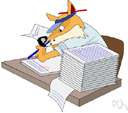



A library using the Cutter-Sanborn system can have D548d indicate David Copperfield by Dickens (where D stands for the D of Dickens, 548 stands for "ickens" and d stands for David Copperfield). The part of a call number that distinguishes a specific item from other items within the same class number. See also Continuation Deprecation Relocation Revision.Ī number of any length to which other numbers are appended. A note at the authorized number indicates when the authorization occurred the date can be used to identify notes for topics that were continued or relocated into the number. A newly authorized number typically results when one or more topics are continued from a superordinate number, but may also involve the relocation of one or more topics. The approval of a number (possibly reused) in the schedules or tables to provide further subdivisions of an existing number. AspectĪn approach to a subject or characteristic (facet) of a subject. Artificial digitĪ letter or other symbol used optionally as a substitute for digits 0–9 to provide a more prominent location or shorter notation for a jurisdiction, language, literature, religion, ethnic or national group, or other characteristic. Arrange-chronologically noteĪ note suggesting the option of chronological subarrangement when identification by date is desired. Arrange-alphabetically noteĪ note suggesting the option of alphabetical subarrangement when identification by specific name or other identifying characteristic is desired. Area table notation may be used with other numbers in the schedules and tables when explicit instructions permitting such use are given. Areas of the world are listed systematically, not alphabetically. Area tableĪn auxiliary table (Table 2) that gives geographic areas primarily, but also lists historical periods and several numbers for persons associated with a subject. See also Class-here note Standard-subdivisions-are-added note Standing room. Topics that do not approximate the whole are said to be in "standing room" in the number. When a topic approximates the whole of a class, standard subdivisions may be added. The term is also used to characterize topics that cover more than half the content of a class.
#Opposite of abridge full#
When a topic is nearly coextensive with the full meaning of a DDC class, the topic is said to "approximate the whole" of the class. Add noteĪ note instructing the classifier to append digits found elsewhere in the DDC to a given base number. See also Broad classification Full edition. The abridged edition is intended for general collections of 20,000 titles or less. Find a comprehensive listing of Dewey Decimal Classification terms accompanied by definitions.Ī shortened version of the Dewey Decimal Classification (DDC) system that is a logical truncation of the notational and structural hierarchy of the corresponding full edition on which it is based.


 0 kommentar(er)
0 kommentar(er)
